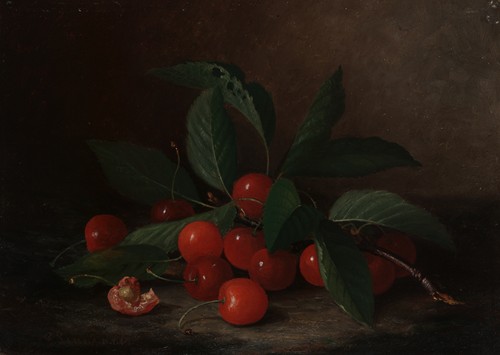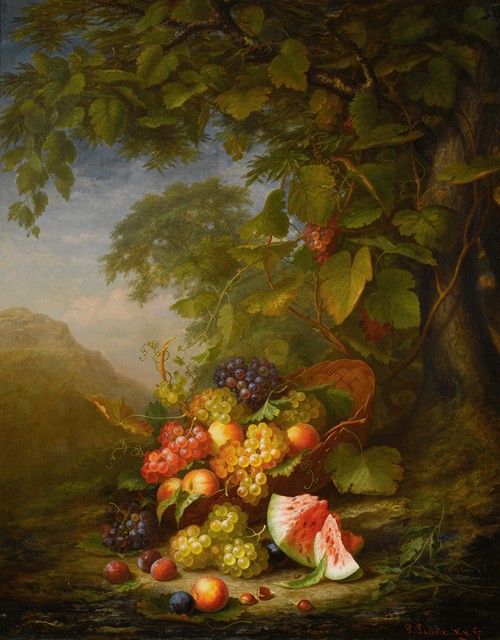

Lacroix was a painter from the American school, of French or Swiss origin, whose production and documentation has remained, until now, in the United States. His name can be found in the directories of New York City, with changes of address, in 1855, 1856, 1857 and 1866. However, in the register of the Annual Exhibition of the National Academy of Design, he appears as being resident, from 1867 to 1869, in Hoboken, New Jersey.
His works were exhibited in the National Academy of Design between 1863 and 1870; among them are still lifes with flowers and fruit, as well as a few landscapes. The profile of this unknown artist was revealed by William H. Gerdts who, in 1971 and 1981, analysed him in the ample context of American still-life painters, and in particular in an extensive monographic article published in 1972 in Antiques Magazine. Among his known early works are a study with bunches of grapes (private collection) and a still life dated in 1860 in New York. These initial paintings by Lacroix are composed with simple and austere lines, which became more ambitious at the end of the 1860s.

